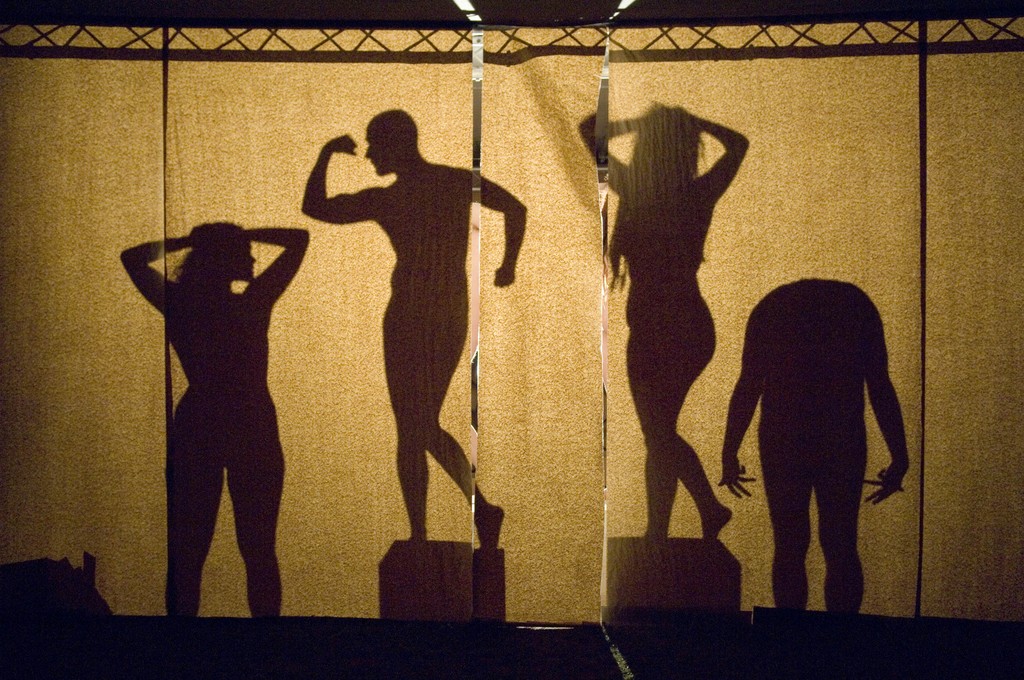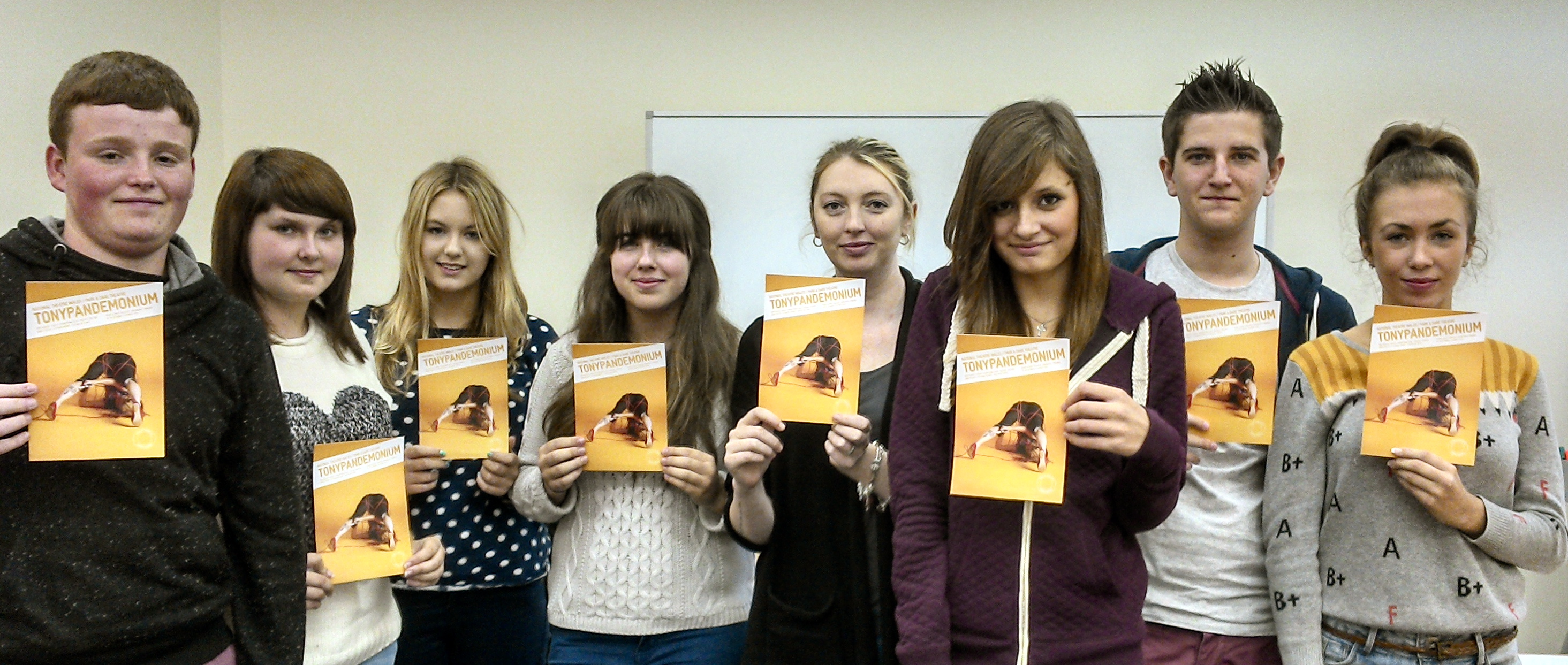
Dylan Thomas prize wining author Rachel Trezise ran the first Writing Squad playwriting workshop in the Zone in Bridgend last Saturday. Bridgend Writing Squad are being supported by Rachel to create a series of ‘plays for voices’ which will be performed at the Park and Dare theatre Treorchy. The Writing Squads plays will form part of a weekend of activity curated by Dirty Protest called ‘Dirty Gifted and Welsh’ a celebration of Wales’ flourishing new theatre writing scene. The Writing Squad will then go and see a performance of Rachel’s new play for National Theatre Wales called Tonypandemonium and will write a review of the production.
Rachel is also going to run workshops for the Writing Squad in RCT.
Workshop are free to attend and run 10-12 each Sat at the Zone, 46-48 Dunraven Place, CF31 1JB
The workshops are supported by Literature Wales and Bridgend Art and Community Development Department.
For further information contact guy.odonnell@bridgend.gov.uk
Category Archives: Theatre
Critical Communities
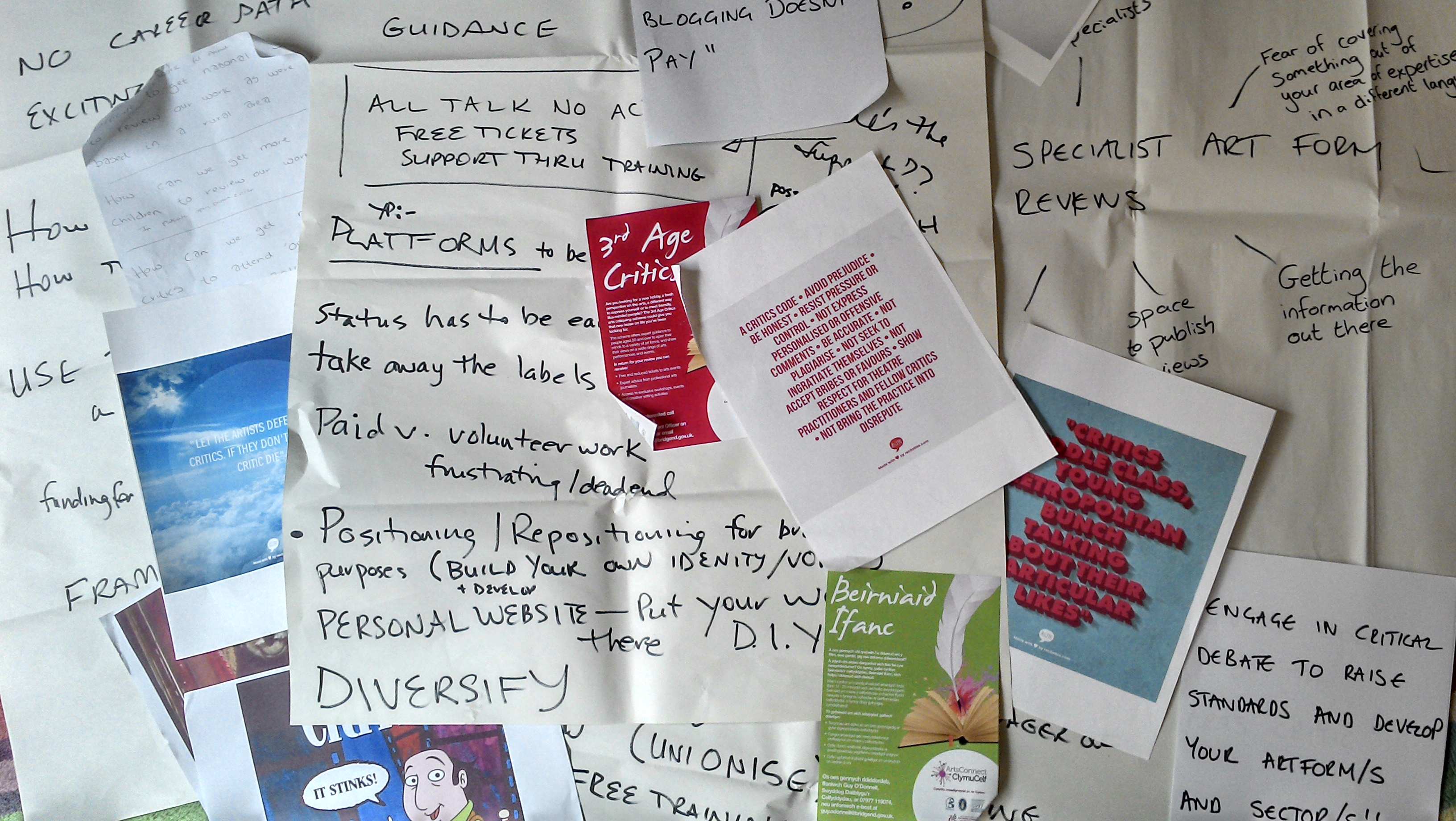
I recently organized ‘Response; Arts Criticism in the Digital Age’ a series of workshops and conversations at the WMC and RWCMD, participants shared their views on a variety of issues, including the on-going relationships between arts critics, venues, producers and artists, critical responses to Welsh venues’ work, the star rating system, arts criticism in the Welsh language, and the future role of the arts critic.
We had a great day of debate and discussion at the WMC on the Saturday; I have posted some of the discussion topics below. We are in the process of looking at ways to follow up many of these areas. If you have any views on the topics please do get in touch.
Tom Beardshaw of Native HQ ran a social media workshop at the RWCMD on the Sunday. Participants were tasked with making a response to the World Stage Design Festival. The workshop participants utilized a range of online platforms to create a variety of responses to the subject matter; most of these feedback methods wouldn’t have been possible utilizing traditional hard copy print methods.
Young Critics Chelsey, Charlie and Elin used Pinterest as a response method, the video app Vine was embedded into their pins on Pinterest, as well as links to their own individual blogs.
http://www.pinterest.com/elin0391/wsd2013/
3rd Age Critic Leslie Herman Jones created a response blog on NTW, Leslie posted some really interesting thoughts on new and traditional response methods to the arts and a possible focus on the ‘young’ at the expense of the more experienced.
http://community.nationaltheatrewales.org/profiles/blogs/response-t…
3rd Age Critic Barbara Michaels learnt how to create a tumblr blog during the Response workshop.
http://www.tumblr.com/about
During the workshop. Barbara was really interested in the opportunities online offers to critics,”by the use of online resources being able to interact with those responding to the critic’s comments – which was virtually impossible under previous methods of publishing in a newspaper or magazine – the critic’s role in the 21st century gains both in value and status”
http://barbiesbuzz.tumblr.com/
Jacqui Onions Administrator for Hijinx theatre and critic for the http://www.thepublicreviews.com/ , responded with a series of brilliant videos to WSD 13 and fully immersed herself in the exhibition creating her own art cart!
http://www.hijinx.org.uk/general-news/2013/09/17/hijinx-at-response…
http://community.nationaltheatrewales.org/profiles/blogs/critical-feedback-to-the-response-event
Megan Childs and Moon Noh from Theatre Iolo used video and photography to create a specific response to the Willow Theatre, The Willow Theatre, designed by architect Tim Lai and theatre designer Brad Steinmetz, both of Columbus, Ohio, USA was voted as the winning design of the sustainable temporary theatre space and was built for the event.
http://community.nationaltheatrewales.org/profiles/blogs/a-sustaina…
Notes from Response event.
Specialist Art form reviews
Lack of specialist critics in Opera, Ballet, Contemporary dance.
Fear of covering something out of your area of expertise or in a different language.
Specific art form critics training
ACW Revenue funding agreement
“Engage in Critical debate to Raise standards and develop your art form/s and sector/s”
Further discussion with ACW, RFO’s
Artists intimidated by Critics and vice versa
Specific discussion as regards disability arts, a lack of training and support opportunities.
The Audience
A constructive relationship with audiences and companies
Commercial aspect advertising selling papers
Give the audience an online voice
Venues/Companies
The role of the critic to support marketing audience development
The relationship with venues and companies trust /respect a well-resourced
process
Insight into the developmental process of work
Careers/Training
Expectation Vs. Guidance
Are people scared of being honest?
All talk no action
No support
Outreach
Platforms to be heard.
Paid V volunteer work frustrating /dead ends
Develop and build your own identity and voice
Personal website but your own work out there D.I.Y.
Diversify
No clearly defined career path
How to pitch and brand yourself.
Use the Young Critics/Young Person title as a way to develop a community
Funding for training and support networks/a collective
Frameworks need to evolve and will
Approach people you admire and respect for mentoring
If you can’t get paid for your work at least gets something else, skill share, editing of your work, etc.
Free training available from the Welsh government?
Centre for Community Journalism Cardiff University
Welsh Arts Criticism, The people with the skills are there but blogging doesn’t pay
Arts criticism in Wales is an unsustainable profession
Wales Arts Review very important, editing of reviews with critics huge help
The role of schools education literacy what can be done in schools to raise critics profile, Arts in Education review ACW?
Collaboration with young people
NUJ?
The Future
Need to nurture critics in Wales, the idea of a national critic National press Wales Supporting future voices
How many people do critics influence
Should critics be engaging in online discussion
Describing the cultural value of Wales’s artistic output
Star ratings develop a more nuanced breakdown
No full time professional jobs collapsing business model
The role of the critic in supporting emerging companies
Getting the information out there.
Space to publish the reviews
See alternative platforms
Oral criticism
Visual criticism
A way to review in more depth and consider a variety of factors
A Critics Code, David Adams?
Status of critics
A welsh Critics Circle
Join the International Association of Theatre Critics
A network for critics like the writers Antelopes group.
A range of voices is positive
Developing Wales global critical response
The role of the critic in raising the standard of art forms
Developing audience confidence
Do you need to look hard for insightful criticism in Wales
Different methods of reviewing online
How to get more young people involved
Welsh Language
Lack of a North Wales critics and reviews in the Welsh Language
Fear of covering something out of your area of expertise or in a different language.
Welsh language specific grammar, formal written language issues
Difficult to get a national review of our work as were based in a rural area.
How can we get more children to review our work, specifically Open Doors Festival 2014
Objectivity of Critics in Wales everyone knows everyone else esp. in Welsh Language
Young Critic Charlie Hammond , getthechance and WSD2013 “For me reviewing is definitely about opening a relationship between artists and myself”
Through a series of workshops and talks, a group of amateur critics, professionals within the media, and other interested parties discussed and dissected what criticism is today, and where it could go in the future. As a part this, Tom Beardshaw of NativeHQ ran a workshop re-considering the form of the critical review in the internet age, and we were tasked with approaching the World Stage Design at the Royal Welsh College of Music and Drama in a different manner to the usual written review.
The World Stage Design is an international celebration of design, exhibiting work in theatre, opera and dance, as well as bringing together theatre practitioners and artists through a whole range of workshops and performances throughout the festival. The work displayed is incredible and the range of designs makes it a valuable experience for everyone. Find out more about the festival here.
To briefly summarise Tom Beardshaw’s words, media as a whole has been transformed by the Internet. Publication is now primarily based on the Internet, with print having become an aspect of a larger whole, where it used to be the dominating force. However, in the process of this repositioning the critical review, and much else of the content in publication, has simply been transplanted from the printed tabloid form. We are only beginning to grasp the possibilities that the Internet offers, one of which is a much more fluid and dynamic view of form, as well as the interaction between the producers and the consumers of content, in this instance critics, artists and readers.
For the review of the festival, I worked alongside Chelsea Gillard and Elin Williams, and we decided to use Vine to produce our content for the festival, collecting our responses on Pinterest. This was driven by the visual basis of the event as well as a desire to experiment with the compact narratives Vine videos can produce. The results can be seen on the Pinterest board World Stage Design.
As the nature of our publication shows, there is a limited access to viewing Vine videos at the moment. The end result is more a Pinterest board with extra links, and it would have probably worked out better had we solely used photos.
Here is what is good about Vines: they are quick, you are able to produce animations out of real life, they have great creative potential, you can make stories, they don’t require a great deal of expertise. Here is what is bad: they are so quick, the image quality isn’t ideal, and, as we discovered, they kind of need to work within a narrative.
Perhaps the case would have been different if we were able to collect the vines in abother way, but having them on the Pinterest page does make me wish I had just taken photos. But what the experience did show me that I really love Pinterest being part of a review, as it is a quick way to extend to the design aspects you would normally miss in most written reviews. It also made me realise the importance of being able to utilise these new formats that the Internet offers, to be one step ahead and grasp the potential that is out there. Even for the World Stage Design, an intrinsically visual based event, there are few pins and boards at the moment.
Ultimately, I have a pull between the desire for broadness and the art of words. We talked a lot about how lucky we are to be in this age where there is so much to exploit and create, whilst ourselves being connected to technology; we are used to the speed with which things develop, and adapt to using new apps and sites with ease. But, for myself, and I think Chelsea and Elin as well, it almost feels like we are at the edge between the two. We are old enough to remember sitting by the fire with our favourite bedtime stories and nothing else, we remember the AOL dial-up that connected by the phone line and took an hour to receive an e-mail (for nostalgia’s sake here is that wonderful dial-up sound), we remember walkmans tapes (just about), we remember when hotmail was the only email. But at the same time, we are not quite young enough to have totally embraced technology: I still don’t use instangram, I have grown tired of injecting hours on facebook staring at the fun my fellow graduates are having on their holidays, I have yet to be snap chatted. There are too many apps for me to care.
I truly believe that there will always be power in the printed word and for people who have made an art of language. But I have also seen that the life of the professional tabloid critic is increasingly a thing of the past, and I’m not really suited to that format anyway. For me reviewing is definitely about opening a relationship between artists and myself: I only write reviews to get tickets to a show, otherwise I would never be able to afford to go to the theatre. I’d like to think that I am level headed enough to be able to open a dialogue, and I hope that it brings a level of sensitivity to writing for work I don’t agree with.
So, I welcome comment boxes and Pinterest boards and tweets and GIFs and any other nonsense that the Internet will bring. So long as, in the end, it works towards making better art, and building a better creative community.
Dandelion Review “The writing, the lighting, the acting, the set – it’s, quite frankly, flawless” by Young Critic Sam Pryce
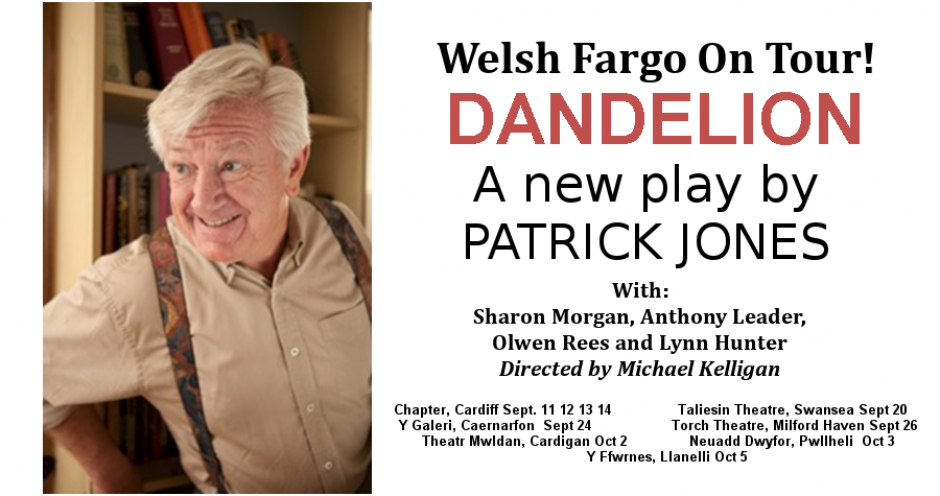
This was the first play to make me cry. Not because it was so awful, of course; but because its story, characters and premise would bring tears to even the most cynical of eyes. In fact, the work of Patrick Jones has always been intensely emotional. His poetry is especially controversial and visceral, tackling subjects as taboo as male sufferers of domestic violence. Even the most fearless of playwrights, Harold Pinter, called his work “very strong stuff.” In November 2008, bookselling giant Waterstones cancelled an appearance from Jones at one of their stores after a pious religious group protested outside due to alleged blasphemy.
However, in Dandelion, Jones considers a gentler yet equally anguished subject – old age. Four characters – three women and one man – recount their lives through a crescendo of remember-whens slumped in armchairs awaiting imminent death. Written from actual encounters when Jones served as writer-in-residence at a hospice, this makes the stories in Dandelion all the more distressing. Death has now become a comfort to these dwindling flames; something to look forward to as the days drag on. They are the dandelions withering away in a garden already blossoming new life. It’s a truly heartbreaking premise, made even more so by the intermittent poetic monologues, showcasing Patrick Jones’ scintillating talent for poignant lyricism. Alongside the grief are some outright hilarious scenes played with as much adroitness and dexterity as the more sombre moments.
The acting is simply exceptional. Anthony Leader plays Ernest with the vitality and energy of a young boy, determined to show that his age isn’t getting him down. Sharon Morgan’s deeply moving portrayal of Rachel puts on a brave face despite the inner turmoil brought on by her tragic past. Olwen Rees wrenches the heart strings as Mary, playing her with wide-eyed innocence, and Lynn Hunter gets the audience cackling with her sour, acerbic comments.
The writing, the lighting, the acting, the set – it’s, quite frankly, flawless. It is rare that a play produces as much tears from laughter as it does from grief. As hackneyed a phrase as this may be: this play will make you live a better life. It’s a drama of universal empathy that beats any amount of dreary soap operas. Get off your settee and bag yourself a ticket before you end up like them.
Dandelion is at Taliesin Arts Centre, Swansea on September 20; Y Galeri, Caernarfon on September 24; Torch Theatre, Milford Haven on September 26; Theatr Mwldan, Cardigan on October 2; Neuadd Dwyfor, Pwllheli on October 3 and Y Ffwrnes, Llanelli on October 5.
‘One Thousand Pages in Two Hours’ Review Lion Boy, Wales Millennium Centre by Young Critic Katie Treharne
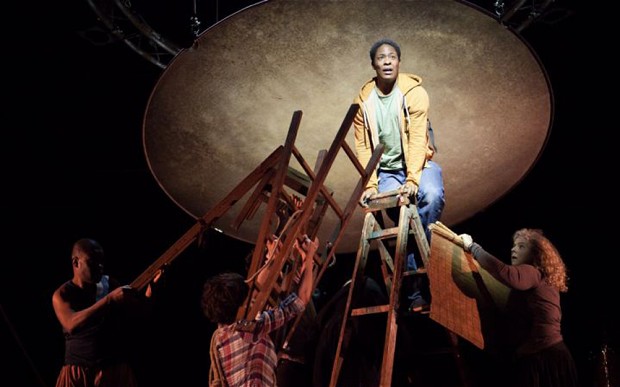
One Thousand Pages in Two Hours
Lionboy
Complicite
Wales Millennium Centre
06/07/2013
From entertaining children with the written word to entertaining children on the stage, Complicite’s production of the bestselling trilogy Lionboy has pulled out all the stops to live up to the books’ high standards. The production, which follows the plight of 11 year old Charlie Ashanti (Adetomiwa Edun) as he races to rescue his abducted parents, stars a simple but talented eight-man cast. Of course, it isn’t the thought-provoking idea of the small Charlie chasing down the abductor, the evil pharmaceutical giant, The Corporacy, which appeals most to the children, but his fantastical power to communicate with cats.
With just a flying disk and movable lighting bars in terms of set, the pressure is all on the actors to bring the tale to life. Each actor speaks and moves with individuality, so much so that at times it is difficult to keep your eyes on one person. The audience is left astounded by a section of awe-inspiring gymnastics on a suspended hoop by the young Lisa Kerr (who plays a variety of roles in the production.) Also particularity admirable is acute use of cat mannerisms which allow Adetomiwa Edun to make quick transitions from animal form to human form naturally and effectively. With no props to aid him, Edun manages to move believingly from the adventurous young Charlie to a hostile lion in just a leap, twirl and feline arm movement. The superb acting leaves little effort for the imagination.
African style instruments accompany the show, played live by a single musician. The particular use of the styled instruments is perfect for the setting of the tale, which mostly takes place in Africa. In addition to this, the actors’ own voices are atmospheric and blend well together to create tension in the most hair-rising sections of the play. No corny solos ruin the ambience.
One of the most difficult aspects of children entertainment is the children’s short attention span. However, the strategically placed twenty minute interval fifty minutes into the show provides a perfect opportunity for the younger ones to refresh, and during the show the use of visual creations such as a lion face created by the shadow of three people does not fail to keep the audience’s eyes on the stage. Similarly to The Britain’s Got Talent 2013 winner, Attraction, who shadow danced their way to the throne, this creative form of entertainment has proved itself to be a big winner with the general public.
Although the interaction with the audience throughout the play also makes the performance more interesting, the cheesy ten to fifteen minute boxing match at the end of the show is a big let-down, in my opinion. The match, which is between The Corporacy and Charlie, requires the audience to cheer for their preferred side, turning the production into a cheap pantomime, which brings the professionalism of the show down a notch. The boxing match, which is obviously intended to be an interesting way to get across the positives and negatives of The Corporacy’s controversial methods of finding the cure for asthma, is overly cheesy and drags on. I personally feel that the actors are a little too reliant on the audience’s responses rather than their own acting skills.
Ultimately, I would recommend Lionboy to anyone looking for an entertaining evening. With enough visual effects to keep children’s attention and plenty of thought-provoking ideas and superb acting to keep adults and teens more than satisfied, it’s sure to provide a spectacular show. Although the cheesiness of the boxing match drags down the overall standard of the show, Lionboy is worth a trip to your nearest theatre.
Reviews Flights of Fancy, Park and Dare Theatre by Bridgend Youth Dance Young Critics.
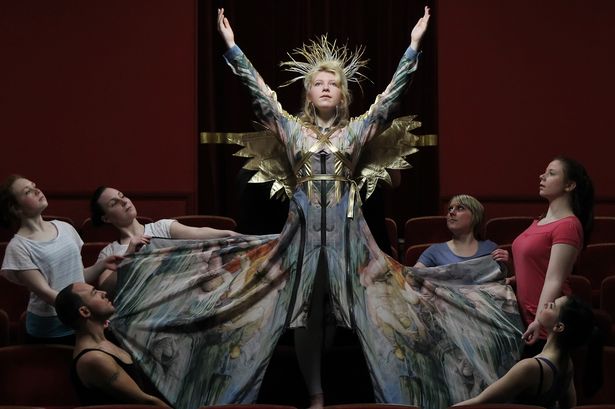
Earlier this year members of Bridgend Youth Dance whom are interested in the field of dance criticism went to see and review Flights of Fancy at the Park and Dare theatre, Treorchy, please find their reviews below.
Review Flights Of Fancy by Anna Whistance, Bridgend Youth Dance Young Critic
Aged 13
I attended the Flights Of Fancy production with fellow members of Bridgend Youth Dance at the Park and Dare Theatre,RCT. The first thing I would like to say is I thought the costumes were fantastic they really gave the effect of a representation of Wales on stage with the bold use of red. I was also struck by the energy of all of the dancers and singers on stage, they were great.
The Flights Of Fancy production used the idea of music and dance throughout the years showing milestones in the areas history this was great and the wonderful use of the building really made the production come alive.
The lighting created some amazing effects on the scenes shown on stage and I loved the glow in the dark costumes!
The only thing I think that could improve the production was some of the timings for the dancers.
Overall I thought the show was very well put together, the energy on stage was electric with giant smiles from the audience !
I would like to say well done to everyone involved in the production and as a young dancer I personally loved Flights of Fancy.
Review Flights Of Fancy by Bronty Freeman, Bridgend Youth Dance Young Critic
Aged 13
Flights of Fancy is a production, which was performed at the Park and Dare Theatre in Treorchy, RCT. The show consists of a variety of singers and dancers, varying in age groups, as they tell the story of the theatre throughout the years.
They production made amazing use of the venue, as the audience were seated on the stage and the performers stage was the theatre seating areas. The costumes were very creative, as was the choreography and the performers made good use of the props.
There was a range of old and modern music and the orchestra played very well. The dancers were very energetic and they were all smiling and looked like they were having a good time, which made you feel happy. The singers ‘The Siren Sisters’ hit every note perfectly, they were very talented, and sung with enthusiasm.
There was a good use of lighting as they had a section performed with neon lights (glow in the dark). It was very creative how they had got dancers to freeze in a still image as you walked through the corridors of theatre on your way in to be seated.
Overall, I think that the show was fantastic and a great display of talent from this area.
Review by Hannah Jenkins Bridgend Youth Dance Young Critic, Age 13
Hi the production show I am reviewing is called Flights of Fancy and was performed at the Park and Dare Theatre, RCT. This show was very creative throughout. I thought there were great directing skills used in this show as it flowed easily from song to song and scene to scene.
First of all I would like to begin with the running time taken to perform the whole production, every single minute was used to illustrate moments and events of the theatres history. I also thought the choreographers did excellent jobs making the dances a perfect reflection of the history of the theatre, as before the show I didn’t actually know any of the history while after the show I knew a lot more. Another thing I liked was the choreographer’s work and how they managed to make still images and illustrations on the way to the seating area of the show, it was a clever and creative idea.
I think the age group differences were great as each performer (including dancers and singers) performed their role with a beam on their face and great use of energy. I think the use of the stage was amazing as every inch I’m sure was used to perform a dance or act! All the costumes were well thought out, made and designed each outfit fitted the story of each scene!
I particularly liked how the lighting crew and costume team put their heads together to make a neon scene, which represented the Doctor Who filming in the theatre! I think I should give credits to the singers The Siren Sisters as they had to remember quite a few songs but they each sang their hearts out!
I think this show is suitable for all ages! It’s well worth seeing the enthusiasm and smiles of all those involved in the production. I would like to thank them for putting on such a great worthwhile show! If the team involved wanted a target for future performances it would be to keep up the energetic and creative work!
Review Blinda, Chapter Arts Centre, by YC Chelsey Gillard. Naked people, Hugs and Pure Darkness!?
Review Diary of a Madman, Living Pictures, Sherman Cymru, YC Chelsey Gillard.
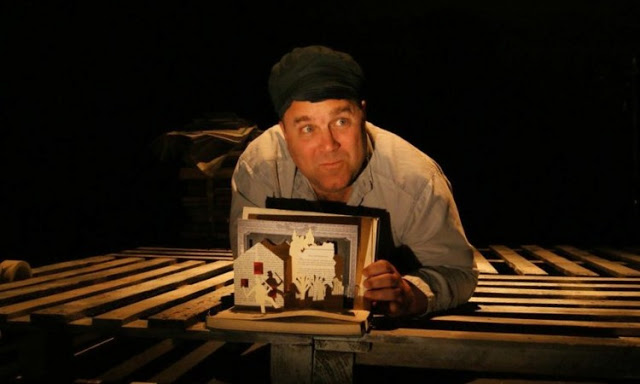
Living Pictures have proved that all you need to make great theatre is an intriguing story, a team with great attention to detail and one actor with awe-inspiring charisma.
|
13 June, 7.45pm
|
Taliesin Arts Centre
|
01792 602 060
|
|
|
18 June, 7.30pm
|
Galeri, Caernarfon
|
01286 685 250
|
|
|
05-06 July, 8.15pm
|
Tobacco Factory, Bristol
|
0117 902 0344
|
|
|
10 July, 7.30pm
|
Y Ffwrnes, Llanelli
|
0845 226 3510
|
|
|
03-25 August, 4pm
|
Venue 13, Edinburgh Festival Fringe
|
07075 161 620
|
Review,Say It With Flowers,Sherman Cymru, Elin Williams

Nobody embodied the concept of rags to riches better than Dorothy Squires. Born in a carnival caravan in Pontyberem near Llanelli, Squires packed in her job at the tin factory, and set out on the ultimate gold paved path to The Big Smoke. There, after years of tireless performances in the West End, she rose to unimaginable fame, and soon after became the highest paid singer in the UK. Although her story is most certainly rags to riches, it is also the perfect example of a rise and fall too. After numerous court cases, Squires found herself broke and back in Wales, housed by a devoted fan in the Rhondda valley Trebanog. From her marriage to Roger Moore to her dependency on amphetamines, Squires’ offstage life was perhaps more dramatic than her performances onstage, and so it was only a matter of time until her life became the focus of the contemporary stage.
The play, named after one of Dorothy’s songs, is a collaborative project between notable Welsh playwright Meic Povey and personal friend of Squires, the writer Johnny Tudor. The script provides a rather well-rounded representation of Squires’ life, but unfortunately it is peppered with numerous clichés and clumsy stumbles into past flashback scenes. The performance is divided into past and present, eventually coming together in a chaotic climax before Squires is carted off to hospital.
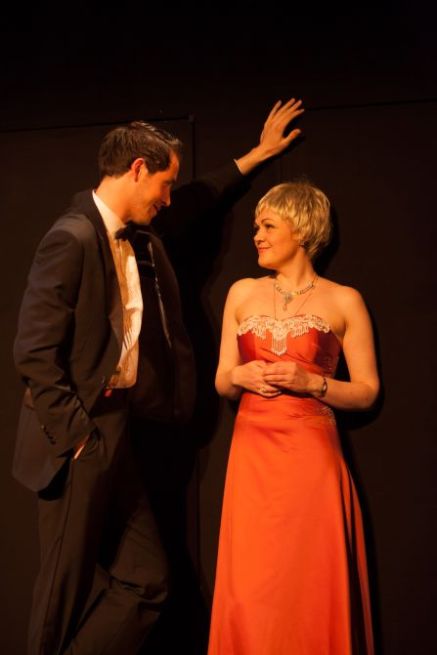
Ruth Madoc plays a stock-type celebrity, although she really begins to thrive during the more dramatic scenes in which Dorothy is falling apart, hallucinations driving her to near madness. Gillian Kirkpatrick is absolutely phenomenal as a younger Squires, not only a fantastic singer and performer, but a truly believable and impressive actress. Lynn Hunter as devoted fan Maisie provides the comic relief, with natural flair for comedy. The script is both funny and original in parts, but it is let down by endless Tory gags, somewhat easy for an assumedly left-wing audience. The frequent swearing, although provoking shocked, cathartic laughs from the audience, really is excessive; the over use of one specific word (beginning with c and rhyming with runt) becomes meaningless and lazy.
The smooth interweaving of music into the piece really gives the script a well-needed boost. Similarly, the odd Welsh language phrase creeps in, serving as a reminder of Dorothy’s rejection of her Welsh identity. This, being such an interesting and relevant theme, certainly could have been developed more. The stage is divided into two diagonal halves, one side a grotty 90′s valley living room, the other a completely black and underused space. The piece does contain a wonderfully creative scene change. Intruding on Dorothy when she is at her most vulnerable, paramedics and policemen come in and strip the walls bear in a frantic display representative of Dorothy’s confusion. The stage is then moved deeper, and is transformed into the clinical confines of a hospital.
Certain aspects of the script really pulled the story back into the harsh light of reality. The reveal of Dorothy’s catheter bag as she tries to seduce an imagined young Roger Moore is really quite poignant and upsetting, but it seems to be misinterpreted by the majority of the audience who laugh at its grotesqueness. This particular example seems to indicate that the script really could have taken the whole thing in another direction, but it never arrived there; the laughs just kept coming.
The story was certainly worthy of stage adaptation, but the script seemed confused somehow. The whole production needed to go that few steps further; more character development certainly would have improved this. It has to be said however that the audience certainly enjoyed the piece; a standing ovation signalled the general feeling of enjoyment. Singing performances were the strength of the production, and after all, that is arguably the main point of representation; Dorothy Squires was above all an iconic Welsh songstress.
Review Salt, Root and Roe, Theatre Clwyd Cymru, Sherman Cymru, Chelsey Gillard
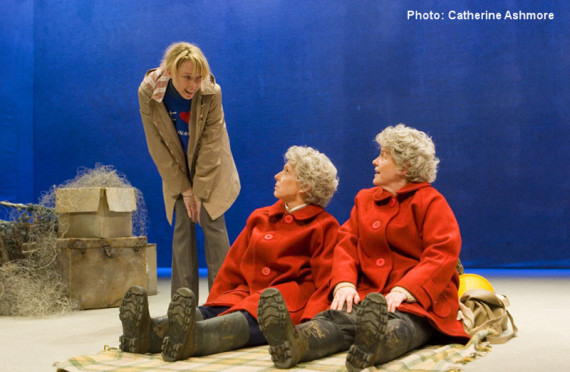
Salt, Root and Roe
Theatr Clwyd Cymru
Sherman Cymru, Theatre 2
8th May 2013
The run down house of elderly twin sisters Anest and Iola seems to rise up out of the sea and if the stories are to be believed they themselves were found in a lobster pot by their father who was half merman!
This feeling of Welsh fairytale runs deep through Tim Price’s beautifully written play and it gives the sense that the twins are somewhat ethereal and otherworldly. Indeed we soon find out that they do not have long left in this world, having decided to take their own lives to release themselves from the torture of Iola’s ever-worsening dementia.
Early moments did (for me) feel somewhat melodramatic but soon a beautifully directed rhythm of highs and lows really captured the sense of Iola’s good days and bad days. Sara Harris-Davies sensitively and convincingly played Iola, skilfully navigating both the tender and the violent aspects of the septuagenarian’s illness. Combined with the tender love pouring out of Betsan Llwyd’s Anest the pair were genuinely heartbreaking and certainly had the audience in tears on more than one occasion.
One of the only things keeping the pair alive is their tie to Anest’s daughter Menna (Catrin Aaron) who rushes to their Pembrokeshire home as soon as she receives a letter from Iola telling her niece that she plans to kill herself. Tragic Menna already has a lot to deal with; she seems to suffer with crippling obsessive compulsive disorder centred on a fear of germs. Her desperation to rekindle her Welsh origins and reignite the older women’s passion for life whilst dealing with her own demons was moving and made an initially cold woman human and relatable.
It wasn’t all doom and gloom; whenever caring local policeman and family friend Gareth (Brendan Charleson) entered he seemed to bring a ball of positive energy with him despite having his own problems at home. His chemistry with Menna was wonderful to watch as the two slowly grew more comfortable in each other’s company.
In what is already a charmingly slow-burning play unnecessarily slow furniture changes sucked any pace from proceedings. Although this suited the gentle nature of the dialogue it was frustrating when the stage was left empty with only off-stage murmurings to keep you engaged.
Having said that, the words and the acting were so expertly crafted that the production did not once lose the audience’s attention. It was refreshing to see a contemporary play that dealt head-on with one of the most controversial topics of healthcare today. Not only did it provide a heartbreakingly honest portrayal of old age but it also had an obvious and well reasoned pro-euthanasia stance without being pushy or overtly political. Here were two old women who could be any Welsh Mamgu trying their best to come to terms with human frailty.
Photo Catherine Ashmore.


